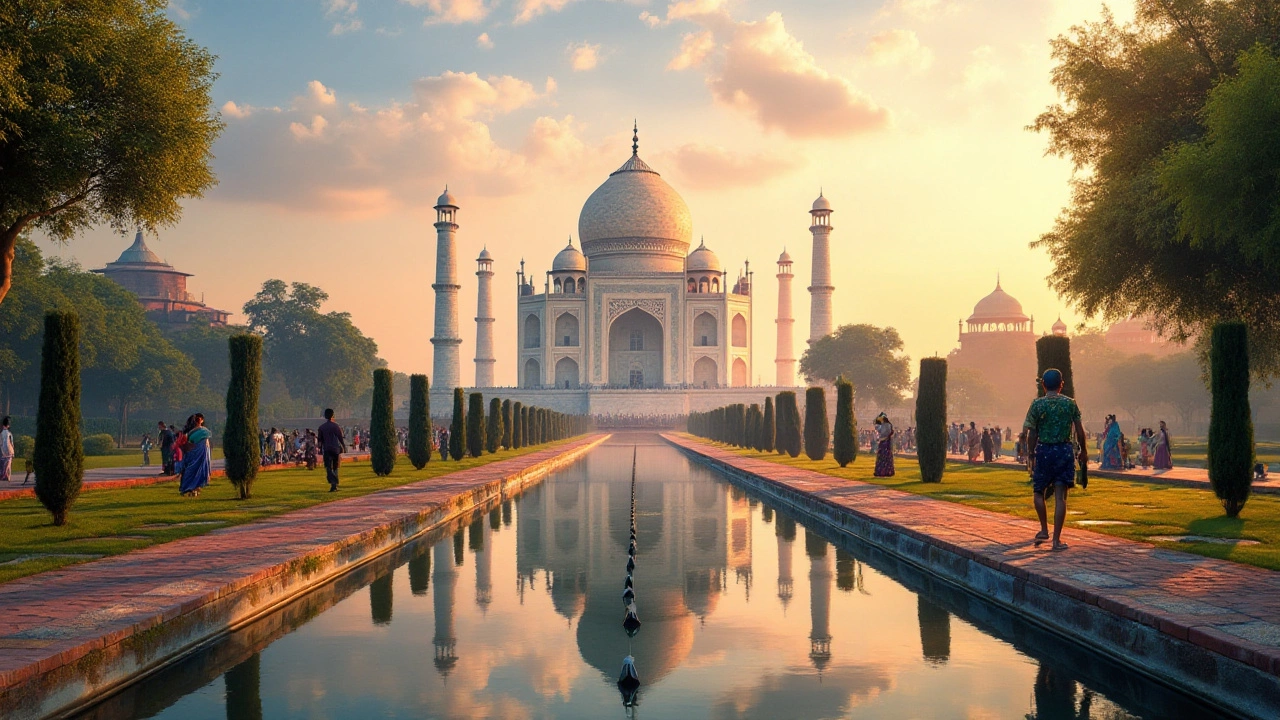SEARCH
Agra Tourism – Quick Guide to India's City of Love
If you’ve heard about the Taj Mahal but aren’t sure how to fit Agra into a tight itinerary, you’re in the right place. This guide gives you the basics you need to see the highlights, eat good food, and move around without hassle.
How to Reach Agra
The fastest way is the Gatimaan Express train from New Delhi – it covers 200 km in just 1½ hours. If you prefer a bus, dozens of AC coaches leave Delhi daily and cost less than a hundred rupees per seat. For those driving, the Yamuna Expressway offers a smooth, toll‑road ride that takes about three hours. There’s also a small airport near Agra, but most visitors find the train or road options more convenient.
Top Things to Do
First stop: the Taj Mahal. Get there early (around sunrise) to avoid crowds and capture the marble in soft light. Next, explore Agra Fort – a UNESCO site filled with red‑sandstone courtyards and impressive arches. A short drive away lies Fatehpur Sikri, the abandoned Mughal capital that feels like stepping back into a movie set. For a relaxed view of the Taj, head to Mehtab Bagh at sunset; the garden offers a perfect photo angle across the river Yamuna.
Don’t miss the Tomb of Itimad‑ud‑Daula (the “Baby Taj”) and the Akbar’s Tomb in Sikandra. These sites are quieter and let you soak in Mughal architecture without the crowds.
When it comes to food, try Agra’s famous petha – a soft, sweet candy that’s perfect for a quick snack. Street vendors serve creamy butter chicken rolls, and local restaurants serve biryani spiced just right for the region. A quick stop for samosa or kachori will keep you fueled for more sightseeing.
Where to stay depends on your budget. Hostels around the railway station start at 400 ₹ per night and are clean and safe. Mid‑range hotels near the Taj charge about 2,500 ₹ and often include breakfast. If you want a splurge, the Oberoi Amarvilas overlooks the monument and offers a luxury experience worth the extra spend.
Practical tips: book Taj Mahal tickets online to skip the long queues, and bring a light scarf to cover shoulders when entering mosques. Carry cash for small stalls, but most larger places accept cards. Hire a licensed guide at the fort – an hour of commentary costs around 500 ₹ and adds context to the stunning carvings.
Sample two‑day itinerary: Day 1 – sunrise at Taj Mahal, followed by Agra Fort, lunch of petha and kebabs, then Mehtab Bagh at sunset. Day 2 – early train to Fatehpur Sikri, explore the palace complex, lunch in Sikandra, then return to Agra for the Tomb of Itimad‑ud‑Daula before heading back to Delhi.
Agra works well as a day trip from Delhi if you catch an early train, but staying overnight lets you enjoy the monuments in softer light and avoid the rush. With these tips, you’ll see why Agra remains one of India’s most romantic destinations.

Exploring Agra's Geographical Heart in North India: A Tourist's Guide
Agra, a city nestled on the banks of the Yamuna River, is a jewel in North India's crown, renowned worldwide for its architectural marvel, the Taj Mahal. This article delves into Agra's geographical location, providing insights into why it is considered part of North India. Readers will uncover some intriguing historical facts about the city and gain useful tips for making the most of visiting this iconic destination.
Continue reading